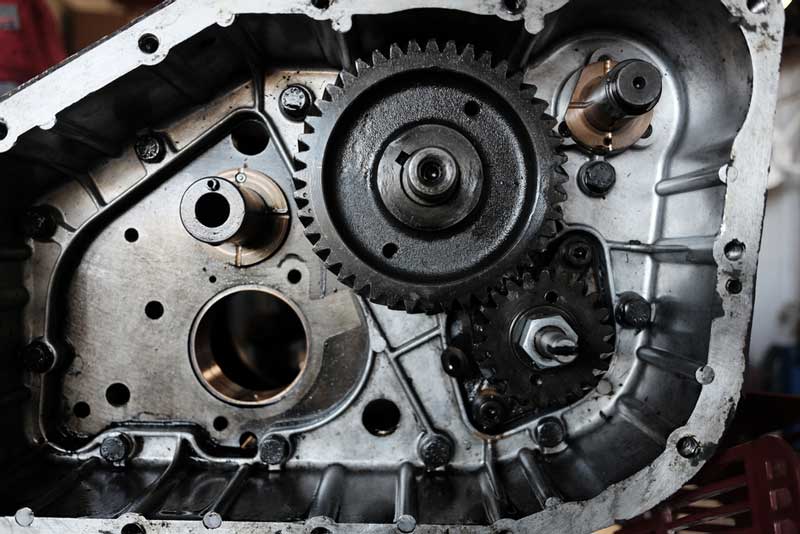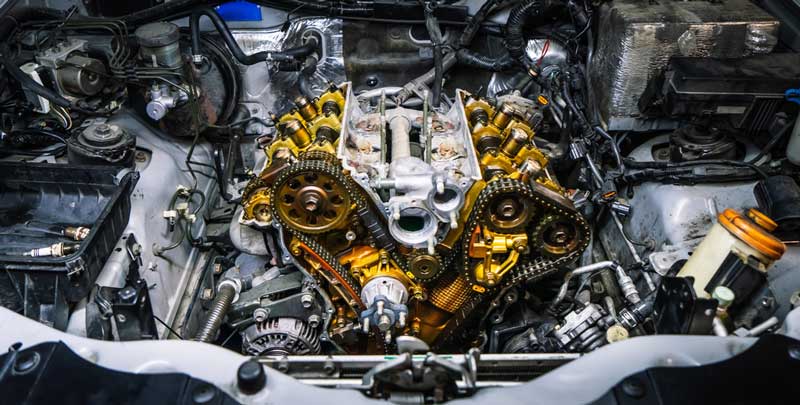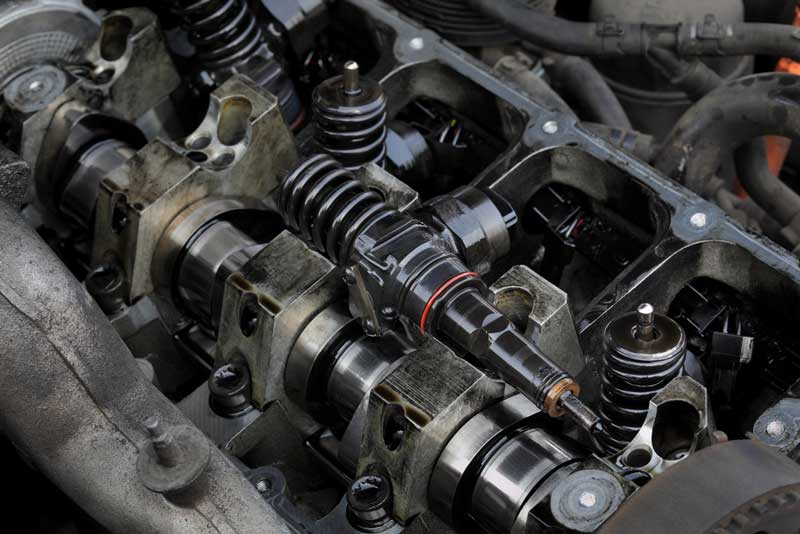Have you noticed a build-up of carbon and sludge in your engine and fuel system? Do you know what Seafoam is and how it can help clean up this build-up in the difficult-to-reach areas in your car’s engine? Have you heard about using seafoam in gas tank?
If you want to learn, worry no more because you’re at the right place.
The internal areas of your engine can become clogged up over time with all sorts of nasty stuff. For example, inside your crankcase, where oil is located, tar and varnish accumulate on different surfaces, such as on the rings, pistons, and lifters and in oil galleys that supply oil to every component in the vehicle.
Due to this build-up, the oil cannot easily flow in the car. This leads to a reduced ability of the engine to lubricate and cool itself, reducing the engine’s life, performance, and efficiency.
This article provides you with the information you need about Seafoam, how to use it, its benefits and how to determine if Seafoam is working in your vehicle.
Let’s get started!
Seafoam in the Gas Tank
It is effective and safe to add in any gas or diesel engine. Use one ounce of Sea Foam per gallon of fuel for scheduled/every tank maintenance. From time to time for a stronger cleaning dose, add a high amount of Sea Foam (a full 16 oz can of Sea Foam to 2-3 gallons of fuel) and use until almost empty before refueling.
Clogging can occur in your fuel system, clogging the carburetor jets or injectors and gumming up your intake valves and the pistons’ tops. When the valves do not move freely, the breathing of your engine will be significantly hampered.
In addition, if carbon deposits accumulate on the valves and pistons, this could result in detonation, which will lower the performance of your machine. Carbon may also get in areas along the engine’s intake tract, leading to turbulent and reduced airflow.
This issue can be resolved by seafoam motor treatment because it is designed to liquefy the sludge deposits deep inside the car engine so that they can safely be ejected out of the machine.
As a result, it ensures better fuel efficiency, a quieter and healthier engine, reduced emissions, higher performance, and a longer engine lifespan. You can either put it into the crankcase/oil cap or the fuel tank or use it to clean the intake.
Also Read: Can You Mix E85 With Regular Gas?
What Is Seafoam?
What, then, is the truth about Seafoam? It is easy to think that all engine cleaning solutions are useless, but extensive research would change that opinion completely.
Even though it’s a universal solution, it is a proven fact that Seafoam performs very well when used as an engine cleaner. It can stabilize an idle RPM and improve a vehicle’s gas mileage.
The seafoam brand is a secret formula designed to remove the build-up of carbon inside vehicles’ fuel systems and engines. For 50 years, Seafoam has been used to rid the engines of cars of oil and fuel deposits.

What Does Seafoam Do?
As time goes by, carbon and sludge will be built inside your fuel system and engine. This will result in clogged fuel systems and more wear on your machine, which may lead to misfires and other risky situations for your engine.
Seafoam motor treatment liquefies the deposits of sludge deep inside the engine so that these deposits can be ejected safely from your machine.
It is easier to clean the internal parts of your engine by removing the entire engine from your vehicle and operating deep inside your engine. However, it’s time-consuming and costly because you’ll have to purchase new gaskets to reassemble them again.
Seafoam motor treatment is an excellent alternative instead of completely taking your entire engine apart.
You’ll find a video below that contains a Seafoam review by Project Farm. This video also gives the different ways in which Seafoam can be used. If you continue reading, you can do so under the video.
Does the Sea Foam Work?
The Seafoam motor treatment solution works. Seafoam’s chemical composition is a well-protected trade secret; however, the two main ingredients are given on the brand’s safety sheet:
- Isopropanol – present in a concentration of less than 25%
- Hydrocarbon blend – present in a concentration of less than 95%
The 100% petroleum advertisement is correct because isopropanol is an alcohol derivative of petroleum, and hydrocarbon is a primary component in petroleum.
Seafoam combines with the fuel and cleans up the entire car system, including the fuel injectors. It is then sprayed inside the cylinder to clean its valves, walls, and piston head. Mixing Seafoam with 1 to 3 full fuel tanks should be sufficient to clean up the engine, depending on your engine’s size.
How to Use Seafoam
Seafoam can be used in various ways. For example, it can either be put into your fuel tank or oil cap/ crankcase or used to clean up the car’s intake.
Crankcase/Oil Cap
Seafoam is an appropriate choice if you’re looking for a product to clean any engine sludge or remove any oil sludge or if you need a product to quieten any engine parts like a noisy lifter.
For every treatment, eight ounces of Seafoam will need to be poured into the engine crankcase. One bottle of Seafoam contains sixteen ounces, so one bottle can be sufficient to carry out two treatments.
It’s highly recommended that you pour half of the bottle into the crankcase servicing your oil, drive for a thousand miles, replace the engine oil, and then pour the remaining half of the seafoam bottle into the crankcase. This way, as much oil and dirt as possible will be removed from the engine.
Open the neck of your oil filter when filling the Seafoam, and pour the substance using a funnel to make the process easier.
Fuel Tank
Seafoam can also be poured into the fuel tank to clean your fuel system effectively. There could be much build-up in the components of the fuel system as a result of old fuel.
There are many different parts in the fuel system, and some components, such as fuel injectors, have very tiny passages, which can get clogged easily.
If these components get clogged, you may experience engine misfires or severe damage to your engine.
When Seafoam is poured into your fuel tank, the solution helps dissolve any fuel system build-ups.
One (1) bottle is sufficient for 16 fuel gallons. This means that, depending on your fuel tank’s size, it is often enough to use only half of one bottle.
Intake
Seafoam can also be poured into your intake system. Over time, a car’s intake system usually gets dirty with much build-up. Carbon accumulates inside the body of the throttle and the intake, which could lead to conditions like rich/lean fuel mixture or misfires.
To Carry Out This Task, the Seafoam Spray Product Should Be Used.
This is best done with a friend. First, detach the hose in the front of your throttle body, then tell a friend to help you start the vehicle and rev the engine up to about 2000 rpm.
As the vehicle is operating at 2000 rpm idle, carefully pour this product (Seafoam Spray product) into your intake. The engine’s RPM will decrease if you use too much of this spray. Therefore, ensure you pour as much product as possible into the information without reducing the engine’s RPM.
Benefits of Using Seafoam
Using Seafoam ensures many improvements, mainly if used on a tired or old car engine.
The significant improvements to expect when you’re using Seafoam are given below.
Better Fuel Efficiency
Using Seafoam cleaning the crankcase will give better fuel efficiency due to lesser friction. You may get a much better air-fuel mixture if you’re using the product in your fuel, and this will cause improved fuel efficiency. You’ll also get an improved air-fuel combination if you’re using Seafoam in your intake.
Every type of use may give improved fuel efficiency to your vehicle.
Quieter & Healthier Engine
When build-up and oil sludge are removed, the engine component will get improved oil pressure and more lubrication. Therefore, this will ensure that your car engine is much quieter and healthier.
Reduced Emissions
Due to the lesser friction and better fuel-air mixture, your car’s engine will have reduced exhaust emissions. These reduced emissions are suitable for your environment and will help in any emission test on your vehicle.
Higher Performance
The lesser friction and better fuel-air mixture boost your engine’s performance when the accelerator is pressed.
Longer Engine Lifespan
Due to friction, your engine will wear out quickly. Also, there could be lean conditions if there’s dirt inside your fuel system, which might cause severe damage to your engine. Using Seafoam to maintain your machine will give it a longer lifespan and help you save money on the repair.

How to Determine if Sea Foam Is Working?
Some people have the misconception about fuel cleaner additives that you cannot check whether they’re working. It is straightforward to get the before and after results. You will need tools, a lot of fuel, and SeaFoam bottles.
Inspection Steps:
- First, lift your car hood and inspect the engine to ensure it’s cold. You want to operate on something other than a warm engine.
- Find your spark plug wires. Gently remove one.
- Remove the spark plug using the sparkplug remover tool.
- Configure a horoscope, and slide a camera into the spark plug’s hole.
- Check the cylinder’s interior for carbon deposits; if you want to, take screenshots.
- Screw in the spark plug and replace the cable.
You could repeat this process for every cylinder, but it should be sufficient to test just one. Fully refuel, and mix in not less than 2oz of SeaFoam per gallon of fuel. Repeat this when your energy starts running out using 1 to 2 ounces of SeaFoam. The third time you’re refilling, use the standard 1oz to the gallon. This would ensure that your engine is thoroughly cleaned, but you could stop after filling it the 1st or 2nd time.
Also Read: Can You Pump Gas With the Car On? (Explained)
Frequently Asked Questions – Seafoam in the Gas Tank
How Much Sea Foam Can I Put In My Gas Tank?
If you’re carrying out routine maintenance on your fuel system (engine to gas tank), one SeaFoam Motor Treatment bottle can treat sixteen gallons of diesel fuel or gas. If you need to do more excellent cleaning, you can add more Seafoam because the more Seafoam is added to the fuel, the better the solution cleans! If you’re stabilizing fuel for storage, you can use one (1) once for one gallon of diesel fuel or gas.
Will Sea Foam hurt a car engine?
If there’s no rich oil flow, the components of your engine may create much friction and result in plenty of issues. If you spray too much Seafoam, you could also clog the vacuum system of your vehicle. This results in more clogs occurring.
Can Sea Foam damage spark plugs?
You will not need to replace your plugs if the solution is applied correctly after using Seafoam Spray.
Does Sea Foam do anything?
SeaFoam helps lubricate moving parts, especially in your fuel system. However, using ethanol additives makes the seals dry out and leaves a varnish, making it much harder for the parts to be lubricated by oil. It is necessary to remove this varnish to bring your engine back to working at its best efficiency.
Will Sea Foam clean the fuel pump?
A can of Sea Foam can treat up to sixteen gallons of fuel. The solution removes deposits from your fuel pump, carb jets, or injectors. It stabilizes the fuel and also controls moisture. When used to clean diesel engines, Seafoam has anti-gel properties and will de-ice the engine.
Does Sea Foam clean catalytic converters?
Although the popular SeaFoam treatment will not clean the catalytic converter, the solution treats the prior problems that initially caused the catalytic converter to become clogged up. In addition, many people have noticed that error codes related to their catalytic converters are resolved after using Seafoam.
Does Sea Foam raise or lower octane?
Sea Foam may raise octane since it consists of alcohol, which resists pre-ignition.
Conclusion – Seafoam in the Gas Tank
For decades, thousands of customers using Sea Foam have been satisfied with its results. With all the testing and feedback conducted, it is safe to conclude that Sea Foam works as a fuel-based cleaner.

